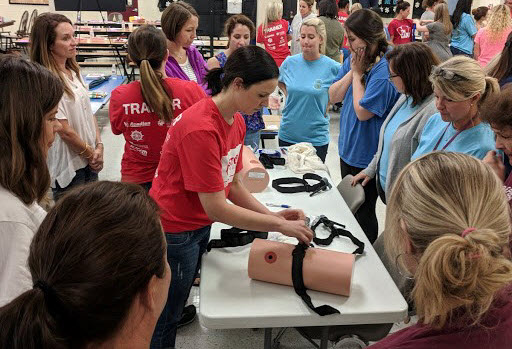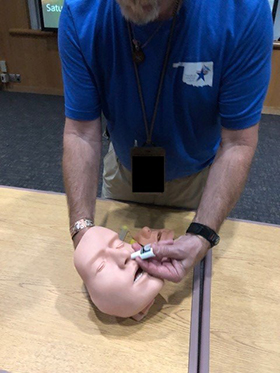Eight Trainings Your MRC Unit Can Offer to Enhance Community Preparedness
Is your Medical Reserve Corps unit looking for a way to bolster community preparedness? You can start by providing community members with training that gives them skills they need to respond – and the confidence to use those newfound techniques. When an emergency or natural disaster happens, many people want to help – but they just don’t know what to do.
The good news is that many people can learn lifesaving skills in a couple of hours – no medical background needed.

Consider this: according to a National Survey of the Public Regarding Bleeding Control, 77 percent of respondents who had been trained in severe bleeding control indicated they were “very likely to aid a car crash victim.” But just 51 percent of respondents with no training indicated that they would be very likely to help. Being knowledgeable, trained, and prepared for an emergency can help alleviate hesitation and fear when disaster strikes, which can, in turn, lead to a stronger bystander response.
The Medical Reserve Corps (MRC), a national network of volunteers who help make their communities stronger and healthier during disasters and every day, can play a critical role in helping to provide information and training to community members so they feel educated and empowered to act before, during, and after an emergency. From natural disasters to health-related incidents, individuals and communities that are informed and trained to respond are more inclined to act when needed, and often better able to withstand and recover from disasters – and help their neighbors do so, too.
Below are examples of eight programs that MRC units can incorporate into their volunteer training plans and community-based outreach programs to teach community members life-saving skills and enhance overall individual and community preparedness:
- You are the Help Until Help Arrives ─ You Are the Help Until Help Arrives empowers the public to take action and provide lifesaving care before professional help arrives. The program encourages the public to take these five steps in situations where someone may have a life-threatening injury:
- Call 9-1-1
- Protect the injured from harm
- Stop bleeding
- Position the injured so they can breathe
- Provide comfort
- First Aid/Cardio-Pulmonary Resuscitation (CPR)/ Automated External Defibrillator (AED) ─ First Aid/CPR/AED training teaches individuals how to recognize and respond appropriately to cardiac, breathing, and first aid emergencies.
|
 |
- Stop the Bleed ─ Active Shooter training teaches individuals how to prepare for and respond to active shooter incidents, including how to create an emergency plan and safely evacuate or shelter in place during an incident.
- Active Shooter ─ Active Shooter training teaches individuals how to prepare for and respond to active shooter incidents, including how to create an emergency plan and safely evacuate or shelter in place during an incident.
- Naloxone Administration for Opioid Overdose ─ Naloxone administration training teaches individuals to recognize the signs and symptoms of an opioid overdose and how to respond by administering naloxone, which can reverse the potentially fatal respiratory depression caused by opioid overdose.
- Psychological First Aid (PFA) ─ Psychological First Aid training teaches individuals the basic skills to offer emotional comfort to survivors of traumatic events, assist in addressing immediate needs and concerns, and foster long-term adaptive functioning and coping.
- Personal and Family Preparedness ‒ Personal and Family Preparedness training teaches individuals how to develop, practice, and maintain emergency plans that reflect what must be done before, during, and after a disaster to protect themselves and their property.
- Severe Weather and other Threat-Specific Training ‒ Trains individuals on common threats in their community ‒ weather events, possible radiological events due to nearby nuclear plants, etc. ‒ and helps them prepare beforehand and know what to do to protect themselves and their property should an emergency event occur.

To assist MRC units in rolling out the above programming, the MRC Program Office within the Office of the Assistant Secretary for Preparedness and Response recently developed a Training Community Members to Respond Guide. It includes more details about each program and available curricula and resources. Questions or suggested additions to the guide can be directed to MRCcontact@hhs.gov.

